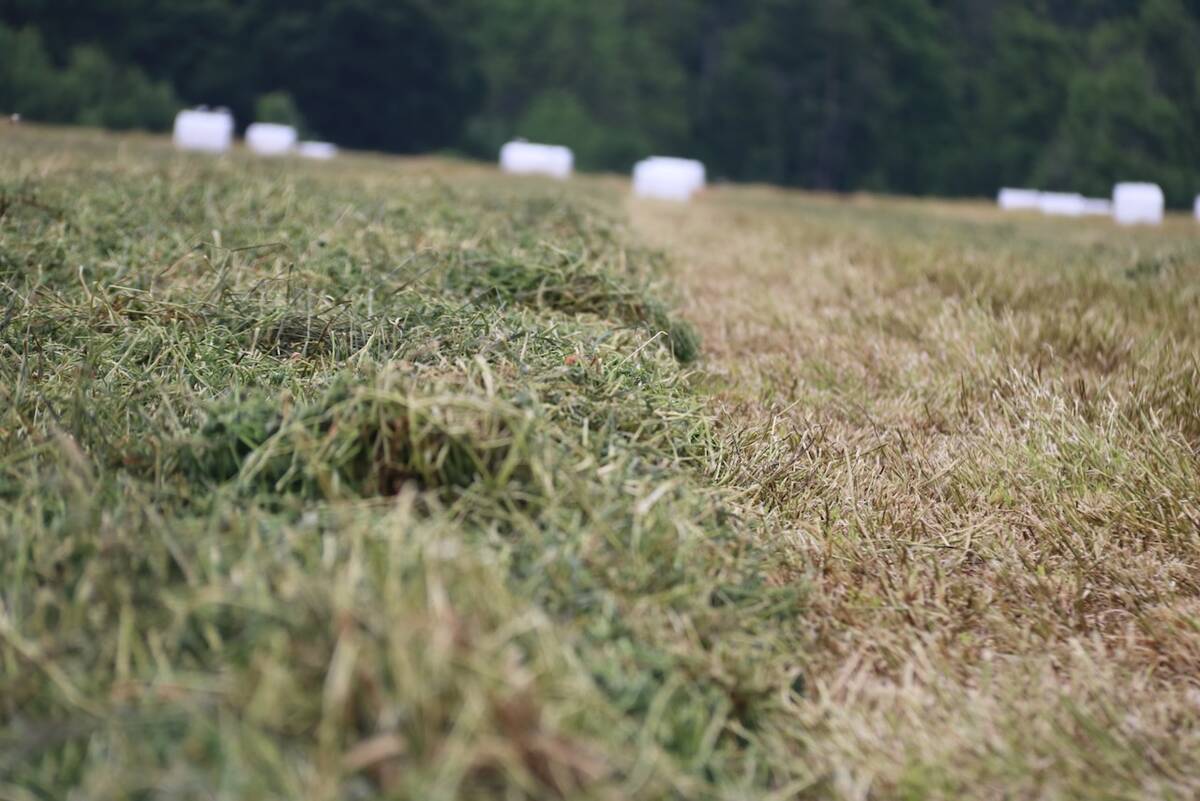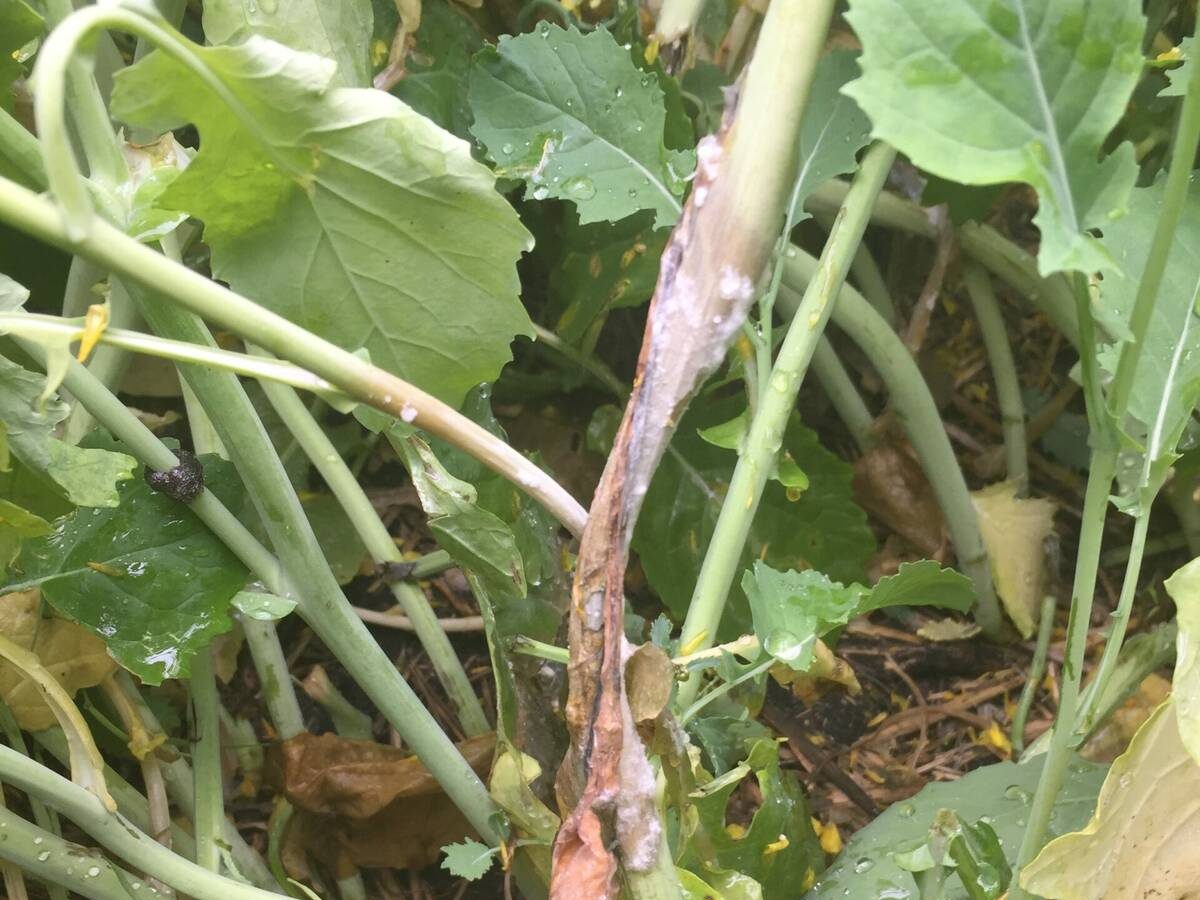An extremely high resistance to a major fungicide, and adaptation to another, are the warning flags raised for canola growers by a report on a major disease’s sensitivity to a handful of fungicides used across the Prairie provinces.
First, the good news: overall insensitivity of sclerotinia sclerotiorum to Group 3 (prothioconazole), Group 11 (azoxystrobin) and Group 7 (boscalid) did not change substantially between 2010 and 2024, says Dwayne Hegedus, a researcher with Agriculture and Agri-Food Canada’s Saskatoon Research and Development Centre.
However, some sclerotinia populations were discovered with elevated insensitivity — or rather, increased resistance — to all three fungicides, he says.
Read Also

New high-performance forage training program to launch in 2026
A new Canadian Forage and Grasslands Asssociation high-performance forage program will be a resource for farmers, agronomists and others in the forage sector.
There was also a single case of extremely high resistance in boscalid in southern Manitoba, plus heightened levels of adaptation to prothioconazole among disease samples.
It’s crucial to assess crop protection tools in order to conserve the chemistries that are effective in sclerotinia and other crop diseases, Hegedus said on the Canola AgriScience Cluster Research Roundup webinar June 26.
“It’s important going forward … that we prolong the usefulness of these fungicide active ingredients, which requires rotating between fungicides with different modes of action using fungicide mixtures — which are becoming more common now in the new products that are coming out — and also to apply these fungicides only when necessary.”
Prairie-wide test
Hegedus reported on an ongoing AAFC project that’s been testing for sclerotinia insensitivity throughout the Prairies over the past two years. He gave the presentation on behalf of his research partners Edis Dzananovic and Lone Buchwaldt, both also with AAFC Saskatoon.
The sclerotinia fungus, of course, is the cause of stem rot — or white mould — in canola. According to Manitoba Agriculture, it’s the most serious disease of canola on the Prairies, with loss reports ranging from five to 100 per cent for individual fields.
In 2023 and 2024, AAFC — through the third-party contractor Epilogic — collected dozens of isolates of sclerotinia throughout south and central Alberta, south-central Saskatchewan, southwestern Manitoba and additional locations throughout the Prairies.
—> WATCH THIS: Fungicide timing for sclerotinia in canola
The sensitivity, adaptation and resistance of the isolates to the three fungicides were then compared to the results of a similar project Buchwaldt ran in 2010.
Hegedus explained the latter two measurements. “An adapted isolate is an isolate that has undergone small changes that allow it to survive higher levels of the fungicide,” he says.
“These could be changes that might interfere with the uptake of the fungicide or the activation of systems that would pump out the fungicide from the cell, but they can increase tolerance for the fungicide and this can have ramifications for field efficacy.”
Resistant isolates, meanwhile, are those with a mutation in the protein that fungicide targets. “These have hugely enhanced resistance to the fungicide, making the fungicide completely ineffective in field situations.”
‘Genuine concern’
The most crucial discovery in the boscalid comparisons was an isolate found at Westbourne, Man., northwest of Portage la Prairie, showing a very high degree of resistance to the Group 7 fungicide. In fact, it was 100,000 times more resistant than the sensitive control, Hegedus says.
The finding motivated the researchers to sequence the target gene — succinate dehydrogenase B — in the isolate.
Doing so, they found a mutation in that gene that has already been found to create resistance to other Group 7 fungicides. It is also known to cause cross-resistance in a broad set of succinate dehydrogenase inhibitor (SDHI) fungicides.
“This is something we have to be genuinely concerned about,” Hegedus says.

Otherwise, the overall population in both 2010 and 2023-24 was sensitive to boscalid.
“We did see some isolates with increased insensitivity as we did with both of the other fungicides. So there’s some adaptation occurring or other isolates with some adaptation.”
Overall, the sclerotinia isolates were sensitive to azoxystrobin with little change in that sensitivity since 2010. Hegedus was surprised by this finding, given the product’s decades-long use against stem rot.
The researchers found some isolates with insensitivity and adaptation, however.
Prothioconazole was a different kind of case. Compared to both the sensitive and adapted controls, a large portion of the population showed adaptation — and in some cases high levels of adaptation — to the Group 3 product.
The sclerotinia population already had a high degree of insensitivity to the active ingredient prior to the research, but the scientists did not find any increase in insensitivity from 2010 to 2023-24.
“So the situation appears to be at least stable,” he says.
—> READ MORE: Company field-tests sclerotinia-resistant canola
Despite this, Hegedus urges caution in the use of prothioconazole, considering the level of population sensitivity and the blowback from its patent expiry.
“This year, we saw many generic products appearing that were registered for control of stem rot in canola. I think there are now nine products available — six or seven appeared last year — containing only prothioconazole,” he says.
“So the market could very well be flooded with cheap, generic prothioconazole, which could lead to its overuse, which could further exacerbate the situation. So I think this is something we want to continue to monitor.”
More data coming
This work is far from over. Next year the researchers — with a particular focus on Manitoba — will be testing all groups and chemistries registered for sclerotinia control in Canadian canola in 2024 and 2025.
The funding for the prothioconazole, boscalid and azoxystrobin research was provided through the Sustainable Canadian Agricultural Partnership’s (S-CAP) AgriScience cluster.
The group has obtained new funding from the Canola Agronomic Research Program (CARP) to support the testing of three additional fungicides, two other Group 7 fungicides with slightly different chemistries and a Group 12 product that came on the market in 2024.
Get the jump on sclerotinia
Maps published by the Prairie Crop Disease Monitoring Network (PCDMN) suggest some heavy rain incidents — such as those seen on the June 21-22 weekend — have increased the risk of sclerotinia, which thrives in wet conditions.
Late May saw very dry conditions in the southern portions of Alberta and Saskatchewan. The most recent map, which covered June 23-28, saw a wide swath of the Prairies with surface moisture percentages of 20 to 25 per cent.
Kelly Turkington, a plant pathologist with AAFC’s Lacombe Research and Development Centre in Alberta and the chair of PCDMN, says these maps offer a “heads up” to producers about their sclerotinia risk, which can be highly variable.
“That may mean that there isn’t a lot of urgency in terms of getting out to scout if things have been dry but if it’s been wet and damp, that would mean that you want to be out in that crop and using the tools that are out there … and gauging the field-specific risk and thus the need for fungicide.”
The dryness around much of the Prairies in late May and early June minimized the risk of stem rot at the time, he says.
“What that means, in a broad sense, is that soil moisture levels were not overly conducive for germination of sclerotiorum stem rot and you typically need about three weeks once you have suitable temperatures (for germination).
“The temperature range is quite broad: 10 to 20 C is the optimum range for germination of sclerotiorum and moisture is a much more critical factor.
“So you need prolonged (moisture) conditions close to field capacity or at field capacity and that will trigger germination of sclerotiorum.”
A “quick-and-dirty” way of assessing sclerotinia risk is to go out in the field around 9 or 10 a.m. and scout, Turkington says.
“(If) the crop canopy is bone-dry, those are conditions that are not conducive to germination of sclerotiorum as well as infection from infected petals that lodge down in the canopy.
“Conversely, if you go out to your field at three or four in the afternoon and the soil is sopping wet, the crop canopy is wet, your pants get wet well past your knees up to your crotch, those would be conditions that — in a broad sense — would be ideal for germination of sclerotiorum.”
Due to the recent rains, some producers may soon be in the position of spraying for stem rot, Turkington says. Germination starts with the production of stipes: little stalks that look a little like golf tees.
“What that means is your inoculum loads might not arrive until well into mid- to full bloom, especially for earlier-seeded crops.
“So in that sense, that might help to give you some clues in terms of timing and when to spray. Early bloom versus full bloom might be more of a target. That’s when you would have that three-week period and the … production of spores might coincide with that crop when it’s in full bloom.”
















